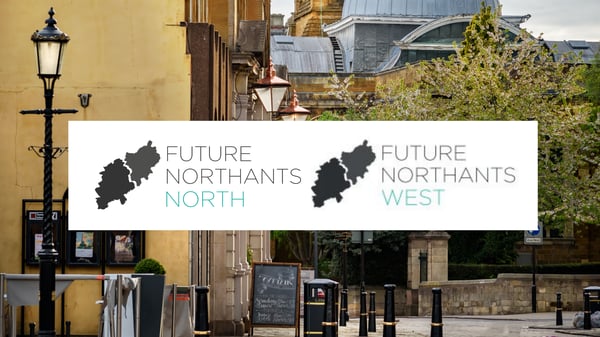Accelerating Government Innovation through Rapid Experimentation
In recent years, a growing number of government agencies, especially at the local level, have engaged in more expansive experimental programme and design projects to test new services and programmes in order to better meet citizen needs, improve the quality of government service, and accelerate innovation.
Rapid experimentation allows government agencies “to test hypotheses and potential innovations and initiatives, as well as validate assumptions.” It also helps build momentum for innovation and change in government bureaucracies, reduces time to deployment for innovation programmes and projects, and ultimately increases the odds of success.
New Urban Mechanics
 Kristopher Carter, Chair of the (Boston) Mayor’s Office of New Urban Mechanics, offers more insights into the benefits of expansive experimentation in government- “experiments and prototyping in government create better policies, programmes, and services for residents. There isn’t just one answer to a problem being raised by residents. By trying out an approach in a way that allows for iterative learning and a lower cost in both time and money hopefully results in addressing the root challenge of a community through iterative design. On emerging topics sometimes we are raising awareness to gather insights. In those cases, the ability to prototype rapidly can improve engagement.”
Kristopher Carter, Chair of the (Boston) Mayor’s Office of New Urban Mechanics, offers more insights into the benefits of expansive experimentation in government- “experiments and prototyping in government create better policies, programmes, and services for residents. There isn’t just one answer to a problem being raised by residents. By trying out an approach in a way that allows for iterative learning and a lower cost in both time and money hopefully results in addressing the root challenge of a community through iterative design. On emerging topics sometimes we are raising awareness to gather insights. In those cases, the ability to prototype rapidly can improve engagement.”
He adds that “experimentation is not binary. There is never a singular answer and often never a comprehensive solution without externalities to the challenges cities are facing. Experimenting allows for us to test those different pathways. Nobody wants to fail. Of course, failure is a potential outcome. Gathering insights, moving at a speed that builds trust and relationship, and being responsive to tangents that emerge in the process are critical. But we don’t always get it right - things go sideways, they stall out, and priorities can shift for stakeholders. We often say that as long as failures are generative and improve our next step, they have value.”
Historically, digital delivery in government has tended to focus on a few very large, unwieldy projects.
Agile innovation
 Alexander Holt, Emerging Opportunities and Partnerships, Digital Directorate, for the Scottish Government, echoes this point, asserting that “the days of big bang experimentation in government are over. By the time these projects are planned and delivered, they just don’t fit the purpose or application for which they were intended.”
Alexander Holt, Emerging Opportunities and Partnerships, Digital Directorate, for the Scottish Government, echoes this point, asserting that “the days of big bang experimentation in government are over. By the time these projects are planned and delivered, they just don’t fit the purpose or application for which they were intended.”
Holt founded the CivTech Programme, a challenge-based programme in Scotland which reportedly “comprised the world’s first digital public services accelerator and Europe’s first GovTech programme.”
In recent years, government organisations have focused more on continuous improvement through experimentation. The arrival of new political entrepreneurs willing to take risks has helped open up more opportunities for experimentation in government.
A key aim of these experimental projects has been to instil a culture of experimentation and innovation that can thrive over the long term. Holt said that there has been a shift in government towards “building more incremental systems, and away from big systems,” mirroring changes in the tech product development process.
In reference to experimental projects in government, Holt notes that “the faster you build them and deploy them, the faster you receive feedback, and the faster you can improve on those projects.” He adds that the “agile delivery of public services is far more effective and less costly than just aiming for big bang public policy solutions.” Agile delivery of those services allows you to “better determine how much to spend on further experimentation, unlike the big bang projects,” in his view.
Another advantage of rapid experimentation and agile innovation in government is that they typically incorporate more of a “co-creation element,” according to Holt. He emphasises the need to work with a wide range of parties in crafting experimental public programmes and policies, including “external users, internal users, citizens, and end users.” Ultimately, the “agile innovation approach to government is superior to the waterfall approach,” asserts Holt.
On one hand, he believes rapid experimentation and agile innovation in government “naturally can be used to deploy technology in the broadest sense, not just in digital, but also in such areas as IoT.” But he stresses that rapid experimentation in government isn’t just about technology transformation. It can also be applied to policy, and that’s the more interesting kind of experimentation.”
Procurement as an enabler of innovation
He sees a particularly important role for rapid experimentation and agile innovation in the government procurement process, and believes “there are far more effective outcomes achieved through incremental increases in contractual values whilst decreasing the number of participants in the procurement process.”
For example, his group has chosen to narrow its selection process for suppliers down initially “to three companies, which receive minimal funding at that stage. In the second stage, that number is whittled down to one or two companies that receive more funding, and in the third and final stage, one company is selected for even larger funding. This process of incrementally increasing delivery helps procurement and delivery teams assess the cultural fit of the suppliers.”
Holt adds that “the challenge approach to experimentation in government has proven far more effective than expecting applicants to meet specific specifications from the beginning.”
During his tenure at CivTech Scotland, his unit has used rapid experimentation and agile innovation for such projects as “building a demand response system for rural transport in Scotland, flood warning sensors, tourism guides, and management of unmanned tourist attractions in rural communities. This approach is more small-business friendly, enabling pathways for innovative technology to come into public service delivery that wouldn’t otherwise have a route.”
Holt emphasises the importance of cultivating the right culture in implementing successfully rapid experimentation projects in government, noting that “if you do it right, you lower the risk level and you deal with mini-risks, allowing change to be generated at a more rapid pace.” He calls attention to an increasing effort in government to shift from “risk aversion” to “risk acceptance,” which is more conducive to rapid experimentation in government. In addition, he believes measurement methodologies for experimentation and innovation programs in government have switched from those of “outputs to outcomes.”
Shared learning on experimental projects in governments around the world is also key to furthering effective experimentation in government, asserts Holt. This methodology has now been adopted by governments across the world, including in South America, Europe and Oceania.”
He notes that different nodes in the CivTech Alliance, “a global network of like-minded innovation programmes across GovTech, Civic Tech, and Academia originally evolving from Scotland’s CivTech programme,” typically learn and benefit from each other’s experimental projects. This ‘leaning in’ on other ground-breaking teams helps push government transformation from within and ultimately “leads to better outcomes for the citizens we all serve.”
Rapid and expansive experimentation can be more effective for certain kinds of government projects, as Carter underscores: “there are particular things that lend themselves to be tested well at a small scale. Large infrastructure projects might not be those things, although if you are going to rebuild a school for instance there are ways to help evolve the design of that school through prototyping. For some policies or infrastructure the benefits are only accrued at scale. What gets worked out in the prototypes for those projects is a better understanding of how to operationalise or tweak the messaging. Many of the challenges cities face are intertwined with large systemic issues (homelessness, racial and economic inequality, substance use disorder, etc.) and it is therefore incredibly important to be honest about the impact the experiment can have and how it builds upon a larger body of work being undertaken.”







